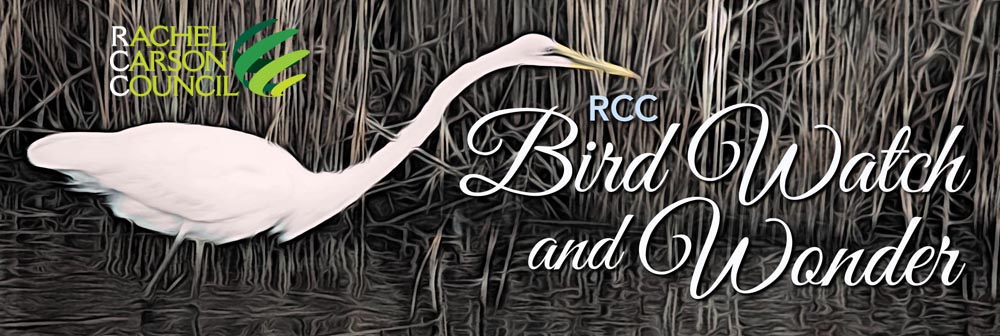 | | | 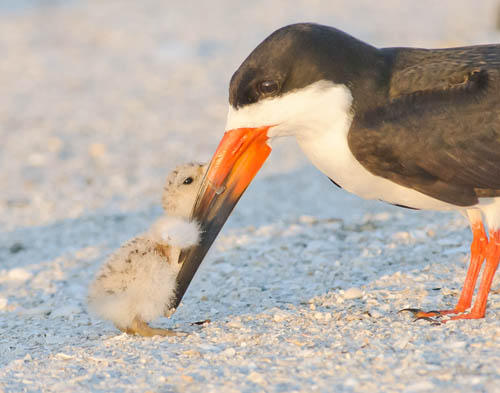 Summer has officially started. Along with a new season comes some exciting bird news. New legislation, such as the SHORRE Act and the Neotropical Migratory Bird Conservation Act (Click here to take action), is being introduced in the Senate as a promising step forward for bird conservation. Locally, awareness of the importance of bird habitat has been growing. In Hampton Beach, New Hampshire, even 4th of July fireworks have been postponed in order not to disturb the nests of endangered Piping plovers. Summer has officially started. Along with a new season comes some exciting bird news. New legislation, such as the SHORRE Act and the Neotropical Migratory Bird Conservation Act (Click here to take action), is being introduced in the Senate as a promising step forward for bird conservation. Locally, awareness of the importance of bird habitat has been growing. In Hampton Beach, New Hampshire, even 4th of July fireworks have been postponed in order not to disturb the nests of endangered Piping plovers. 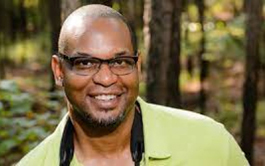 In the “Bird Lore” section of our June issue, RCC’s Ross Feldner reflects on one of Rachel Carson’s favorite birds --the Veery. Under “Books,” you’ll find The Home Place: Memoirs of a Colored Man’s Love affair with Nature by J. Drew Lanham, a member of RCC’s National Advisory Council. It’s reviewed by RCC Stanback Fellow Christina Boxberger. We also highlight Florence Merriam Bailey, the Rachel Carson before Rachel Carson, for her pioneering role in the practice of birding as a method of studying birds rather than killing them. And, in “Bird Findings,” we review studies of the long-term effects of DDT, eliminated decades ago after Silent Spring. DDT discarded into sewer systems at the time is still adversely affecting marine food chains and birds. In the “Bird Lore” section of our June issue, RCC’s Ross Feldner reflects on one of Rachel Carson’s favorite birds --the Veery. Under “Books,” you’ll find The Home Place: Memoirs of a Colored Man’s Love affair with Nature by J. Drew Lanham, a member of RCC’s National Advisory Council. It’s reviewed by RCC Stanback Fellow Christina Boxberger. We also highlight Florence Merriam Bailey, the Rachel Carson before Rachel Carson, for her pioneering role in the practice of birding as a method of studying birds rather than killing them. And, in “Bird Findings,” we review studies of the long-term effects of DDT, eliminated decades ago after Silent Spring. DDT discarded into sewer systems at the time is still adversely affecting marine food chains and birds. Keep reading… | | | | | | | | | | Top 10 Maryland Birding Events Maryland welcomes wildlife watchers and photographers from across the U.S. and around the globe to experience world-class birding in a variety of easily-accessible habitats. From our Western Maryland mountains to the Chesapeake Bay to our Atlantic barrier islands, more than 450 species of birds have been documented in the state (check out this impressive statewide species tally from our friends at the Maryland Biodiversity Project). | | | | | | Birding Banshee July 9 @ 8:00 am Join us for a morning walk at the Banshee Reeks Nature Preserve, a diverse 695-acre treasure in the heart of Loudoun County. This is a birding hotspot because the preserve’s streams, trees, shrubs and fields attracts many species of birds. Loudoun Wildlife Conservancy and the Friends of Banshee Reeks sponsor this regular outing that takes place the second Saturday of every month. Bring binoculars if you have them. | | | | | | Introduction to Birding and Ornithology Busch Annapolis - Belcher Conference Room C
Wednesday, July 13, 2022
10:30am - 12:00pm Registration for this event will be open from June 29, 2022 @ 10:00am to July 13, 2022 @ 10:30am. Birding is the perfect outdoor and social distancing activity. It's relaxing and fun. We'll talk through, from soup to nuts, how to pick and choose binoculars, how to use and focus them, finding a good field guide, and how to identify birds in the field. As time allows we'll also go over some basic bird biology that will help with finding birds around you. | | | | | | | | Hampton Beach Fireworks Postponed Due to Rare Nesting Birds Firework shows at Hampton Beach are on hold for a few weeks, including Sunday night because of an endangered species of birds. The birds are called 'piping plovers'. They are a rare, federally-threatened species that only nest on sandy beaches like at Hampton Beach and Seabrook. Officials tell News 9 there are a record number of plovers that are nesting right now so it's important for beachgoers to keep an eye out and keep their distance. There are only 2,000 pairs of birds that nest every year. This year, there are 16 pairs of piping plovers nesting in New Hampshire, which is a record. | | | | | | A Life of Poverty, Drugs Reborn with Nature, Birds As a young man in one of Washington, D.C.'s toughest neighborhoods, Rodney Stotts had little to live for. His father had been murdered. His mother was addicted to drugs. Many of his friends were dead from gun violence. And he expected to end up dead or in jail. But then in 1992, an environmental program changed his life. In his new book Bird Brother, the 51-year-old writes about the "healing power of wildlife" that took him from drug dealer to wildlife expert. | | | | | | | | What Do Birds Do for Us? Some might not realize the tangible value of birds, but it would be foolish to underestimate how tough life would be without them. Odds are, if you’re reading this magazine, you feel a moral and aesthetic imperative to support bird conservation. With an estimated 1,200 species facing extinction over the next century, and many more suffering from severe habitat loss, the impulse to protect birds must be universal. Right? Well, if you happen to be a birder or a biologist, then “of course, birds have an intrinsic value, and we have an ethical obligation to conserve them,” says University of Utah ornithologist Cagan Sekercioglu. | | | | | | | | Migrating Birds Need Your Help Tell your U.S. Senators to cosponsor S. 4187, the Neotropical Migratory Bird Conservation Enhancements Act (NMBCEA). In her landmark book, Silent Spring, Rachel Carson wrote about the destruction of birds from the indiscriminate use of chemical pesticides. Worse, the loss of birds is a harbinger of ecosystem collapse. Now, 60 years later, we have a chance to tell our U.S. Senators to co-sponsor the Neotropical Migratory Bird Conservation Enhancements Act that would ensure that the EPA reins in pesticides that threaten birds and the insects they rely upon for food. | | | | | | Want More Birds in Your Yard? Choose Native Plants How the plants you put in your backyard can attract more birds and help give them the complete diet that they need. The black-capped chickadees coming to your seed feeders get 20 to 25% of their nourishment there. There is research to support the numbers. Those birds have a usual nesting territory of 6 to 10 acres. This is where they look first for food. If they're not finding the remaining 75 to 80% of their daily dietary needs from natural sources within that territory they must look for it elsewhere. That takes time and energy for breeding birds. | | | | | | Remembering Florence Merriam Bailey, the Bird Woman of Washington Highlighting a woman, Florence Bailey, who was integral in studying birds and starting the practice of birding. One of the greatest friends the wrens, robins and chickadees of Washington ever had was the author of a book with the wonderful title “Birds Through an Opera-Glass.” Her name was Florence Merriam Bailey and she was among the first to champion a radical idea: If you want to learn about birds, it’s better to look at a live one through a pair of binoculars than to hold a dead one in your hands. | | | | | | Bipartisan Bill Would Protect Birds, Beach Communities From Lea-Hutaff Island to the south end of Wrightsville Beach, birds are returning to nest at our inlets and beaches. Brown pelicans are already patrolling the waves and marshes to feed their young. Black skimmers and least terns are raising chicks right on the sand, to the delight of beachgoers and vacationers. Birds have safe places to rear their young on our coast thanks to years of teamwork by conservation organizations, volunteers, state agencies, and local governments. A new bipartisan bill in Congress offers an opportunity to build on this work by protecting our beach towns and important coastal habitats at the same time. | | | | | | Students in North Carolina Tackle Light Pollution with Cube Satellites How six students from UNC Asheville are creating a tool to help support Lights Out initiatives in North Carolina and beyond. One of the biggest challenges to getting Lights Out programs adopted into official city ordinances is a lack of data on light pollution and its effects. For a group of students at University of North Carolina (UNC) Asheville, that challenge was an opportunity. | | | | | | 9 Best Certified Bird Friendly Coffee Roasters Certified Bird Friendly and Organic coffee promotes biodiversity, sustainability, fair trade, and contributes to a green morning routine. I get it — coffee is a touchy subject. There’s nothing like decades of caffeine addiction and sacred morning routines to ingrain brand loyalty. But our coffee consumption comes at significant environmental cost. If drinking coffee is something you do every day, then switching to a Bird Friendly roast is a meaningful way to green your morning routine and contribute to a healthier planet. | | | | | | Window Precautions Save Birds’ Lives Each year, millions of birds are killed in the United States by flying into windows. Birds are an important part of every ecosystem because they pollinate plants, maintain insect populations, and disperse seeds. Protecting birds in our area is an effective way to maintain a healthy ecosystem. To understand how to prevent birds from colliding with your windows, it is important to first understand why it happens. | | | | | | | | The Birds, They Don't Sing Here Anymore A very emotional and personal statement on how deforestation causes a loss in birds. 'The sounds of the birds are muted as if their songs have been stolen from them. But it wasn’t the songs that did them in; it was their pedestals upon which they perched to tell the morning to come on and start the day. The trees went before and took the birds with them.' It was a traumatic experience for my wife and I when they were cut down. I witnessed one of these sentient denizens die … the chain saw cutting its lifeline, its last stand and then its crashing to the ground. | | | | | | | | | | Efforts to Save North America’s Most Endangered Bird Are Succeeding A captive breeding program has quickly turned around the precipitous decline of the Florida Grasshopper Sparrow. On June 1, a tiny Florida Grasshopper Sparrow scurried out of an outdoor aviary and onto conservation lands south of Orlando, joining a fragile but recovering population of the most endangered birds on the continent. Unbeknownst to the little brown bird, it was the 501st captive-bred Florida Grasshopper Sparrow to be released as part of a concerted breeding effort. | | | | | | Grasslands Worth Millions to Beekeepers, Invaluable to Birds Grassland conservation in the Dakotas generates millions of dollars in annual revenue for beekeepers while improving the abundance of sensitive bird species, according to a recently published study. Scientists with the U.S. Geological Survey, University of North Dakota and North Dakota State University quantified the economic benefit of grasslands to beekeepers in North and South Dakota. They found that annual beekeeping revenue increased by $7,525 per 10 square kilometers in healthy grassland ecosystems. | | | | | | | | DDT Still Harming Birds of Prey, 50 Years After Its Ban “Can anyone believe it is possible to lay down such a barrage of poisons on the surface of the Earth without making it unfit for all life?” —Rachel Carson Fifty years after the banning of DDT, the notorious insecticide is still harming iconic birds of prey along the California coastline. According to research published in Environmental Science and Technology, California condors and marine mammals along California’s coast are contaminated with several dozen different halogenated organic compounds related to DDT, chlordane, and other now-banned legacy chemicals. | | | | | | A Birder Is Back in the Public Eye, Now on His Own Terms Christian Cooper’s encounter in Central Park with a white woman who called 911 to falsely accuse him of threatening her spurred a national outcry. Now he is hosting a birding series for National Geographic. For years, Christian Cooper has studied the habits of Kirtland’s warblers, Swainson’s thrushes, Acadian flycatchers and the other birds he has spent countless hours searching for or observing. While Mr. Cooper, a resident of Manhattan, has watched birds all over the world, one of his most frequent haunts is his beloved Central Park. | | | | | | | | Song of Wonder – The Veery “The song of the Veery is one of the most magical and exquisite in the bird world. It is an ethereal downward spiral of flutey notes with an echoing, ventriloquial quality”. – Frank Chapman, author of Bird Life (1897) Often, it’s the flashy or well-known birds that get a lot of attention. Think Bald Eagle, majestic and symbol of America or Northern Cardinal, the very popular bright red bird that is unmistakable. So popular it’s the state bird of Illinois, Indiana, Kentucky, North Carolina, Ohio, Virginia and West Virginia. But what about some of the more furtive and drab members of the avian family? | | | | | | Handsome Eastern Towhee Had Bit Part in Early NC History The eastern towhee, a strikingly handsome bird that — good looks notwithstanding — is perhaps more noted for its many vocalizations. Towhee is an onomatopoeic description of one of its most common calls, coined in 1731 by the naturalist and bird artist, Mark Catesby. But well before that, the eastern towhee played a minor role in North Carolina’s early history. John White was the governor in 1587 of the small colony on Roanoke Island that later became known as the Lost Colony and was the grandfather of Virginia Dare, the first English child born in North America. | | | | | | New England's Birdsong is Getting Quieter. A Scientist is Trying to Reconstruct Those Lost Soundscapes As the sun set over the Great Meadows National Wildlife Refuge in Sudbury, Joan Walsh spotted one arrival after another from the annual spring migration of birds. Tree swallows over the marsh. A phoebe. A red-winged blackbird. On the horizon, an osprey diving for fish. But these seasonal migrations are a shadow of what they used to be. | | | | | | The Mysterious Life of Birds Who Never Come Down I found a dead common swift once, a husk of a bird under a bridge over the River Thames, where sunlight from the water cast bright scribbles on the arches above. I picked it up, held it in my palm, saw the dust in its feathers, its wings crossed like dull blades, its eyes tightly closed, and realized that I didn’t know what to do. This was a surprise. Encouraged by books, I’d always been the type of Gothic amateur naturalist who preserved interesting bits of the dead. I cleaned and polished fox skulls; disarticulated, dried and kept the wings of roadkill birds. | | | | | | Rethinking Gardens as Havens for Birds Native plants in settings that mimic nature invite birds and pollinators If you’ve spent any time on the Outer Cape, you know that birds are a thing. They make the news here, with people calling in their sightings for a weekly report produced by Mark Faherty, science coordinator at Mass Audubon and past president of the Cape Cod Bird Club. There’s a shop for devotees in Orleans: the Bird Watcher’s General Store is a window on the subculture of local birdwatching. | | | | | | | | A Modern Art Critical Analysis of Birds' Nests Discussing the artistic value of different birds’ nests Scrappy and bold, this nest exemplifies the substantial field of street art-based nests, using found materials and constructed anywhere to avoid authoritative scrutiny. I once saw a masterpiece spilling out of the letter D on a sign for Donuts near my house. Breathtaking. | | | | | | ‘For the Birds’ Installation Brings 30 Funky Birdhouses to Brooklyn Botanic Garden The exhibit is meant to make a point about the threat to our bird population from overdevelopment. Bonus: there's a bodega birdhouse. Brooklyn Botanic Garden has gone to the birds. More than two dozen birdhouses will be popping up all over the garden June 11 for an exhibit called “For the Birds,” which highlights the connections between birds and plants. BBG recruited international artists to build the birdhouses with designs inspired by the birds that can be found around the borough. | | | | | | | | 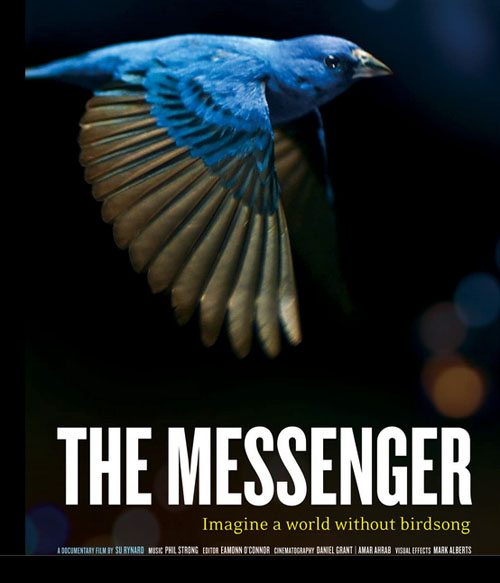 ‘The Messenger’ Ponders Vanishing Songbirds ‘The Messenger’ Ponders Vanishing Songbirds
A documentary on how the songbird population has halved within the last five decades, “The Messenger” investigates various human factors and environmental changes to find some possible explanations.
Songbirds migrate mostly after dark to evade larger predatory birds, and the bright lights in big cities discombobulate them. Skyscraping glass towers prove such a problem at night, while their reflective floor-to-ceiling windows cause head-on collisions during the day.
Domestic cats also pose a huge threat, and are responsible for the extinction of more than 32 bird species. Meanwhile, the French regard the ortolan bunting as a delicacy, with local authorities ignoring violations of a Europe-wide hunting ban. Read more | | | | 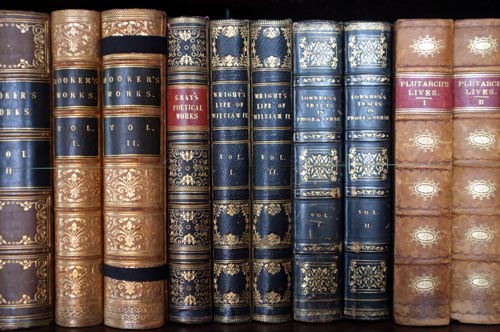 | | | “I believe this affinity of the human spirit for the earth and its beauties is deeply and logically rooted. As human beings, we are part of the whole stream of life.” - Rachel Carson, Lost Woods “In the belly of a Blue Wall forest, every season howls through the hollows and rolls over the hills with a clarity that cries out for worship. I know that I’m in the depths of a living, breathing thing.” - J. Drew Lanham, The Home Place 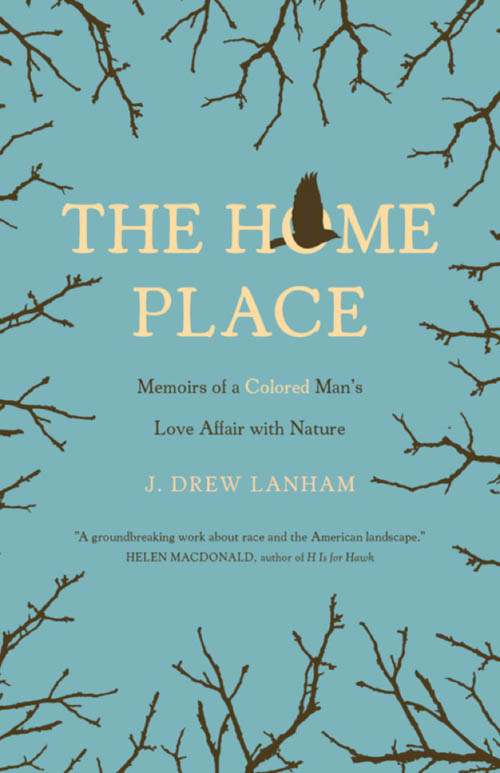 The Home Place: Memoirs of a Colored Man’s Love Affair with Nature by ornithologist, author, and poet, J. Drew Lanham, is an ode to family, spirituality, and wildness, grounded in the “clayey soil” of his Home Place, a seven acre farm in South Carolina’s piedmont. Every person in love with nature should read this book, whether for Lanham’s heartfelt perspectives, or simply as a keen reminder of the people and places that made each of us into an environmentalist. The Home Place: Memoirs of a Colored Man’s Love Affair with Nature by ornithologist, author, and poet, J. Drew Lanham, is an ode to family, spirituality, and wildness, grounded in the “clayey soil” of his Home Place, a seven acre farm in South Carolina’s piedmont. Every person in love with nature should read this book, whether for Lanham’s heartfelt perspectives, or simply as a keen reminder of the people and places that made each of us into an environmentalist.
What struck me most about The Home Place is its spirituality. Drew Lanham, raised as a Baptist, writes about nature with the same reverence that many Southern folks use to talk about God. “Were the brilliant colors of the leaves against the perfect blue sky what heaven looked like?” young Drew wondered while sitting in church, “I dreamed of that place. Not the little church - or even heaven - but the brilliant landscape and the wild perfection that surrounded it. My God lived out there.”
Like Rachel Carson, Lanham knows that the way to make people care about conservation isn’t through facts, but through feeling. Throughout his descriptions of the natural world, he weaves in stories of his Home Place childhood and family: gathering medicinal plants with his grandmother; tending to green pastures of cows with his father; and leaping off ladders in hopes of flying like the birds he admired. Lanham and I came to our love of nature in different ways, and because of our identities, we experience it differently as well. But the emotions he infuses into each essay of The Home Place feel deeply familiar. Crucially, The Home Place paints a compelling picture of Lanham’s experiences as a Black man in the primarily white fields of birding and ornithology. He writes of feeling like the “rare bird” among his peers, but always knowing that the wild was one place where he never had to question if he belonged. Lanham spends only one chapter on the negative aspects of his time in nature, but in it he doesn’t sugarcoat his feelings of isolation at professional conferences, or fears of white supremacist violence while carrying out field studies. Lanham acknowledges that the history of slavery makes it difficult for many Black folks to love the land the way that he does; he also thanks his ancestors for the good ground they laid. “They had no choice in working the land, but bondaged toil and constant struggle made a future possible in which I could freely choose the land as my first and everlasting love.” In The Home Place, Drew Lanham chooses the land again and again. The gentle years he spent on the Home Place didn't last forever. But he doesn’t linger long on the injustice of that loss. Instead, he tells us about his plans to nourish and restore the ecosystem of his mother’s old land, creating for other young naturalists the kind of haven that the Home Place was for him. And in the telling, he calls us to do the same. The Home Place is the winner of the 2017 Southern Book Prize, the Southern Environmental Law Center’s Reed Award, a finalist for the John Burroughs Medal, and was named a “Best Scholarly Book of the Decade” by The Chronicle of Higher Education. Purchase a copy here. Birders, also read his essay “9 Rules for the Black Birdwatcher”, published in Orion Magazine. | | | | | | 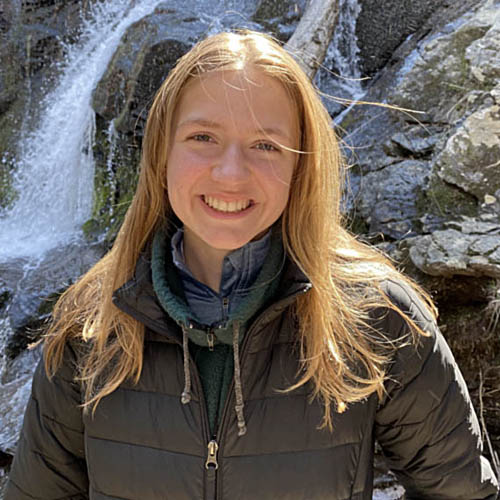 Christina Boxberger, RCC Stanback Fellow – Climate Justice Christina Boxberger, RCC Stanback Fellow – Climate Justice
Christina is a senior at Duke University majoring in Environmental Science with a minor in Psychology. Born and raised in Durham, she is devoted to enjoying and protecting North Carolina’s ecosystems. | | | | | | The June 2022 issue of Bird Watch and Wonder was produced by RCC Stanback Presidential Fellow Maggie Dees.
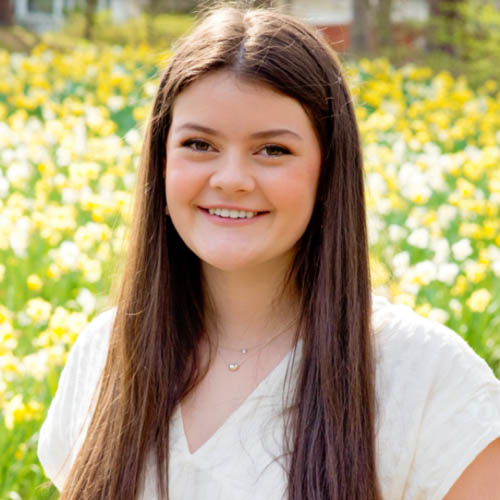 RCC Stanback Presidential Fellow – Maggie Dees RCC Stanback Presidential Fellow – Maggie Dees
Maggie Dees co-leads the RCC Bird Watch and Wonder program. She is a sophomore in the honors program at Virginia Tech University majoring in environmental science. She is from Salisbury, NC, and is passionate about environmental justice and conservation. | | | | | |  The Rachel Carson Council Depends on Tax-deductible Gifts From Concerned Individuals Like You. Please Help If You can. The Rachel Carson Council Depends on Tax-deductible Gifts From Concerned Individuals Like You. Please Help If You can. | | | |  Sign Up Here to Receive the RCC E-News and Other RCC Newsletters, Information and Alerts. Sign Up Here to Receive the RCC E-News and Other RCC Newsletters, Information and Alerts. | | | | | | | | | | | |